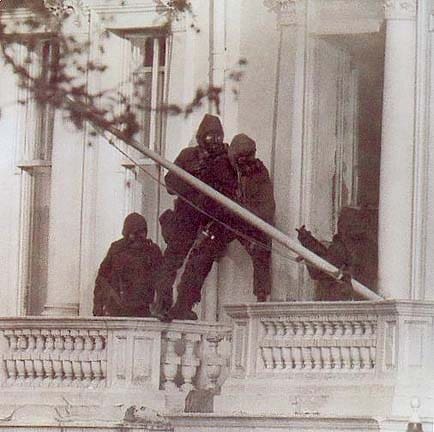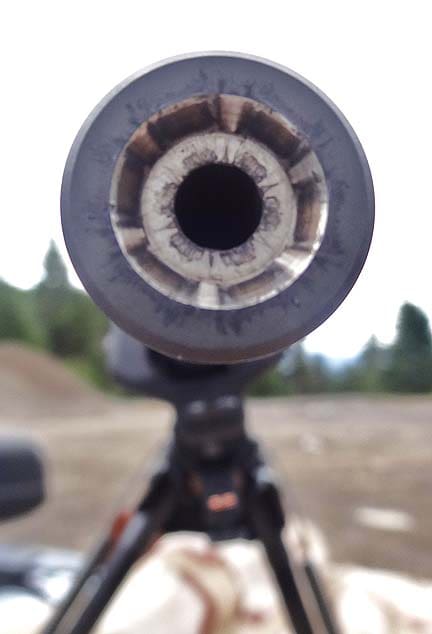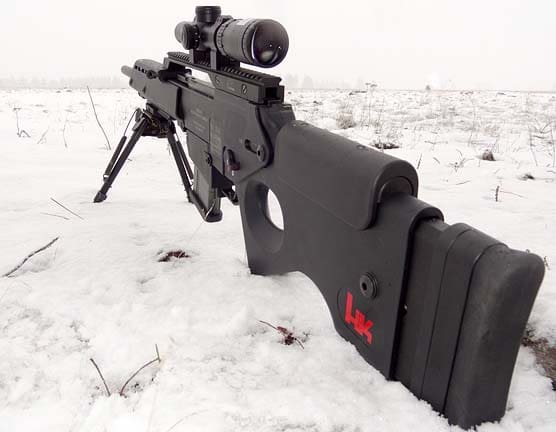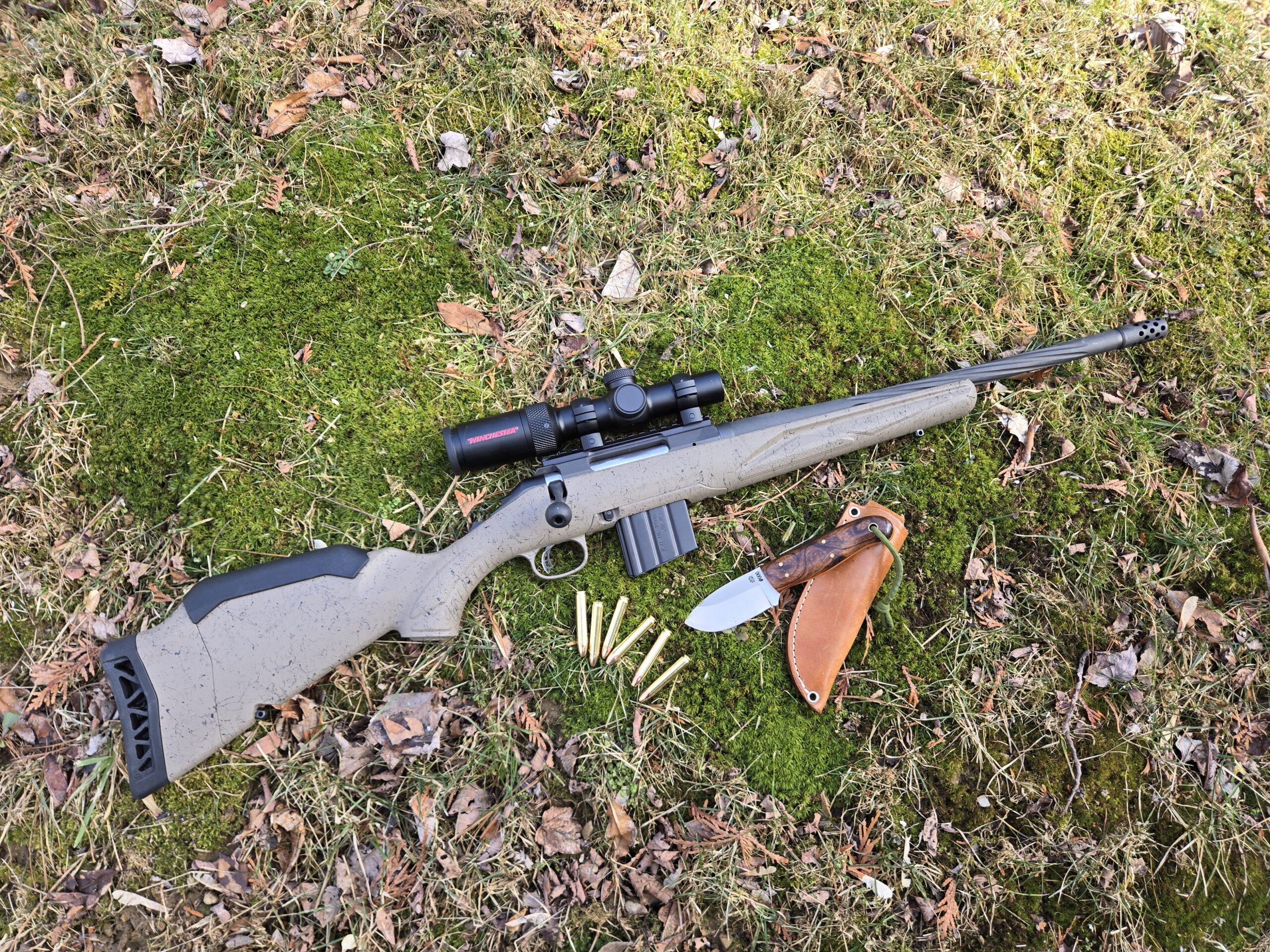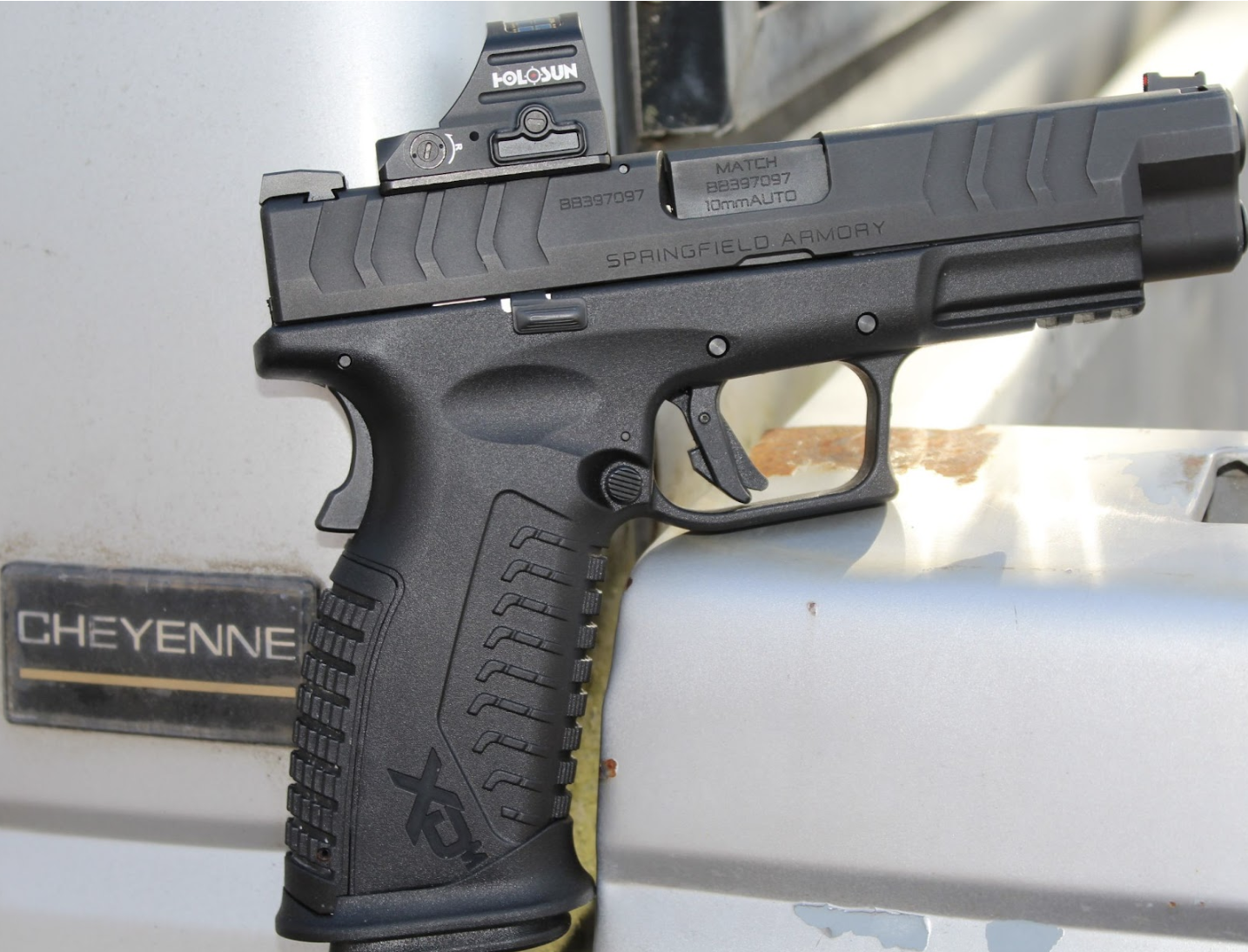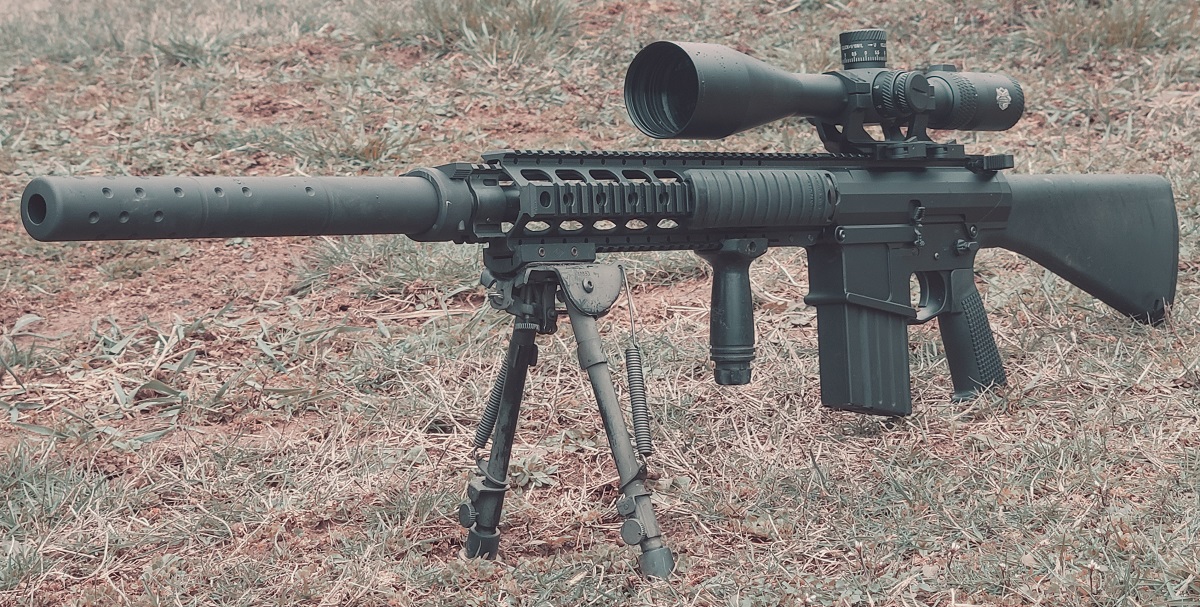[ED: Last week HK announced that they’ll be bringing back the SL8 rifle, the import-legal version of their G36. The reintroduced SL8’s MSRP is $1699 ($1749 for the California-legal version). For those unfamiliar with the SL8 we’re republishing Joe Grine’s excellent review of this…interesting rifle.]
As we’ve all learned – some more quickly than others — elections have consequences. No one should be surprised by the Bidenharris administration’s move against gun rights. So given recent political realities, it seems rather apropos to review the ultimate politically correct version of a modern military “assault rifle,” the HK SL8-6.
Does it suck? Yes and no. Yes, if what you really wanted was a semi-auto G36. No, if you’re satisfied with a good semi-auto varmint/target rifle. In any event, I was able to do some extensive testing on this highly P.C. black rifle so please read on.
In the interest of full disclosure, let’s start with an AA meeting sort of confessional: My name is Joe and I’m a semi-recovering HK fanboy. But if your formative years happened in the 1980s, how the hell could you NOT be an HK fanboy?
After all, in the 80’s and 90s HK virtually dominated both the military and police markets. Pretty much every red-blooded American gun guy lusted for HK-stamped Teutonic steel, roller actions, paddle releases, and drum sights.
The cult of HK entered the subconscious of the American gun culture when black-clad, gas-mask-adorned commandos from the legendary British Special Air Service (“SAS”) used HK MP5s to excellent effect in Operation Nimrod, on May 5, 1980. It was fairly epic: a high-profile action in which SAS operators stormed the Iranian Embassy in London to recover hostages, killing five hostage-takers in the process.
The entire drama played out on live TV to a stunned world. As an impressionable twelve-year-old, I remember watching the evening news and seeing the SAS commandos rappel down the side of the building and apply a breaching charge to a balcony door. A sense of duty, honor and country overcame me. In my mind, I needed those weapons.
Once the dust settled, the SAS had cemented its reputation as the premier counterterrorism unit in the world (this was only a week after Jimmy Carter’s disastrous Operation Eagle Claw debacle in the Iranian desert). And HKs suddenly became the undisputed weapon of choice of the best-of-the-best spear-tip types. This, in spite of the fact that one of the MP5’s experienced a FTF, leaving SAS commando Sergeant Tommy Palmer to dispatch one terrorist with his Browning High Power 9mm.
Regardless, for the next twenty years, Hollywood studios showcased uber-cool MP5s and PSG-1s in virtually every military and police shoot-em-up movie. Gun guys like myself lapped up every minute of it. Pining for HK toys became a national gun-guy pastime.
However, by the late-1990s, it seemed that HK was in a funk. They lost prominence as MP-5s were discarded en masse by law enforcement in favor of the M16/AR-15 platform. HK customer service (for non-LEOs/Military) was a hit-or-miss proposition and availability of spare parts was often…well…dicey.
It also seemed that the guy at any given gun show with the biggest selection of HK spare parts was also the biggest nut job in the room. His prices always gave you the illusion that he thought he was sitting on the last remaining HK parts in existence.
Adding to the confusion was HK’s rapid-fire releases of pistol designs: USP’s, P2000s, P30s, HK 45s, Mark 23s. All were competent enough, but like a Louis Vuitton wallet, it was difficult to conclude that they were worth all that coin. Despite a huge lucrative government contract, none of the HK pistols gained the same degree of iconic status among gun buyers that their previous offerings had enjoyed. In fact, some concepts downright fell flat.
Despite all that, HK continues to secure plenty of government contracts, including one to supply the U.S. Marine Corps with M27s to replace the M249 SAW at the squad level. And HK again re-gained its legendary status as the go-to weapon of choice of the special operations forces when a Navy SEAL DEVGRU operator used an HK 416 to put two bullets into Osama Bin Laden’s melon on May 1, 2011.
Whether these accolades are enough to restore the HK mystique amongst the American shooting public remains to be seen. But, as discussed below, the HK SL8-6 won’t be the gun that accomplishes that goal.
G36: The SL8’s Daddy
Albeit somewhat neutered, the SL8-6 is, at its core, a G36 so the genesis of the G36 warrants mention. The end of the cold war left Germany’s Heckler & Koch holding the bag on their multi-million dollar G11 project. With no sales and no potential government clients willing to spend millions on an expensive experimental assault rifle, HK’s future was uncertain.
Things were bad enough that it took an infusion of capital from — of all sources — British Aerospace, to restore HK’s balance sheet.
Nonetheless, cold war or not, Germany’s Bundeswehr still needed a replacement for its aging HK G3 (HK-91) battle rifles and the G36 was born out of this unmet need.
Although newer designs such as the FN SCAR seemed poised to eclipse it, the G36 is an amazing piece of kit. It’s modular and field convertible. It uses a high-strength, carbon fiber-reinforced polymer receiver and hand grip, a folding butt stock and an aluminum carry handle/sight assembly.
Perhaps most significant from an operational standpoint, the G36 is fully ambidextrous and relatively lightweight at 7.7 lbs. The ambidextrous cocking lever can be used both as a forward assist and can be “rode” to silently chamber a round. The bolt will hold to the rear on an empty magazine and, if the operator prefers, the bolt hold open device can be manually disabled by the operator sans tools.
The G36 is highly controllable in full-auto, a fact attributable to the bolt’s low mass and the the in-line relationship of the barrel and buttstock. And it’s easy to clean, too. Unlike most previous military assault rifles, the G36 gas system doesn’t direct fouling back into the weapon’s action, ensuring excellent reliability. HK states in its promotional material that the G36 can go 15,000 rounds without cleaning. That’s right, 15,000 rounds.
The G36 is now in operational use with dozens of military groups throughout the world, including Germany and Spain.
Neutering the G36 for the ’94 Assault Weapons Ban
Heckler & Koch released the SL8-1 to the U.S. in 1999 at a price point of $1250. Given that the SL-8 is essentially a civilian incarnation of the G36, one might have expected a warm reception from the U.S. gun-buying public. But the SL8 had been altered significantly to downplay the “assault” and increase the “sporting” or “target” nature of the rifle.
Combine that with a then-high MSRP, limited availability, some dealer price gouging, a lack of aftermarket accessories and crushing competition from AR-15 manufacturers and perhaps, in hindsight, it’s not surprising that the reception was lukewarm at best.
HK designed the SL8-6 during the dark days of the Clinton-era “assault weapon” ban. (1994-2004). As a result, it has three politically correct features intended to make it less scary to gun-grabbers who know virtually nothing about firearms or how they work. Most notably, the SL8-6 features an annoyingly non-ergonomic thumbhole stock, instead of a scary and assaulty-looking pistol grip and a shoulder thing that goes up.
Second, the SL8-6 ditches the double-stack magazines of the G36 in favor of proprietary, safe-for-kids 10-round, single-stackers. The factory 10-round magazine is made of a translucent polymer material. The magazine is somewhat stiff and difficult to load, but functions with a high degree of efficiency.
If you view the SL8-6 as a bench target or a varmint rifle, the 10-round capacity won’t matter much to you. But that’s a particularly obnoxious feature if what you’re really seeking is a semi-auto G36. Yes, you could convert the SL8-6 to a G36 configuration by substituting a bunch of U.S. parts. Unfortunately, the conversion is both intensive and expensive.
Third, to give the SL8-6 less of an assaulty feel, HK replaced the lightweight 18.9-inch barrel of the G36 with a 20.8-inch medium-heavy contour barrel with a 1:7 twist. The barrel is free-floated from the receiver out past the removable forend.
The heavy barrel alters the rifle’s balance, making it front-heavy. Again, varmint shooters won’t care, but it makes the rifle ill-suited for fire and maneuver situations or 3-gun matches.
One final PC feature is the rifle’s caliber designation. The marking “Kal. .223 Rem.” is emblazoned on the side of the rifle in large lettering. However, hidden away on a portion of the trigger guard that’s behind the receiver when the gun is disassembled is the inscription “Kal 5.56 x 45.” Hmmm…anyone care to speculate on that one?
Barrel
As I stated earlier, the match-contour chrome-lined barrel on the SL8-6 is 20.8 inches long and has a slight taper (from .84 inches at the breech to .79 inches at the muzzle). In fact, the SL8-6 has a heavier barrel contour than the MG36, which is the light machine gun variant of the G36.
The barrel is ideally suited to long range precision shooting and high-volume varmint hunting. Unlike my pencil-barreled HK93, the SL8-6 doesn’t experience any POI shift after rapid-fire 60 rounds. It has an aggressively recessed crown that should do a good job of protecting the critical areas of the muzzle face. I thought the pattern made by the burnt powder was kinda cool.
Bolt Carrier Group
The SL8-6’s bolt carrier group is one of the most interesting components on this rifle. It’s more or less a rectangular block of steel, which vastly differs from the cylindrical shape of my AR-15. My understanding is that rectangular and flat-shaped components are becoming more popular with gun manufacturers these days because of the wide use of CNC machining. The AR-15’s cylindrical bolt carrier, on the other hand, was designed in a pre-CNC era, and would have been cheaper to produce in the 1960s because it could be turned on a lathe with great precision.
I’ve always been into studying gun designs, and I find it very interesting to trace the evolution of any gun’s design back to its historical roots. In this case, the SL8-6’s bolt carrier group design harkens back to the mid-1960’s. The core design is first found on the Armalite AR-18/AR-180. Here’s a photo of the AR-180 design for comparison:
Those of you who own a FN SCAR may find it interesting to know that the SCAR and the HK G36/SL8 have a lot of common DNA. They’re practically brothers, as shown below in this photo comparison of SCAR 16 and HK SL8-6 bolt carriers. (the SCAR bolt is the darker one on the top):
The bolt on the SL8-6 also shares some common lineage with the AR-15. Again, this bolt was designed by Eugene Stoner while he was an engineer at Armalite. In the left hand photo below, you can see a comparison between the locking lugs of the bolts of an AR-15 (left) and a HK SL8-6 (right). Note that one of the lugs has been shaved off of the SL8-6 bolt so that it will not work with double-stack magazines.
Those of you familiar with the bolt design of an AR-15 will immediately recognize the similarities with the SL8-6’s bolt. In the right hand photo above, one can see how the AR bolt (black, on right) also serves as a gas piston, whereas the piston on the SL8-6 is a separate part.
I was surprised to see that the SL8-6’s firing pin is much thinner than the one found on an AR. It looks like it would be pretty flimsy, but there’s no history of systemic problems with the G36 firing pin.
Gas/Piston System
One of the things I really love about the SL8-6 is the gas system. I spent a lot of time in the Army cleaning M16A1s, A2s and M4s, and frankly, it got really old. A traditional AR uses a “direct impingement” design which blows all of the hot gases back into the bolt carrier group. This eventually gums up the action, especially when firing blanks.
After about 300 rounds, the inside of an AR-15 looks like a chimney. And after 1000-1500 rounds, stoppages can start to occur. With modern cleaning tools and a power drill, I can do a pretty decent job of cleaning an AR-15 in about an hour. In the military, we typically didn’t have good cleaning equipment and it a lot longer to get a gun clean enough for the unit Armorer to accept it.
The HK G36/SL8-6 changes all that. According to HK’s promotional materials, the G36/SL8-6 can fire 15,000 rounds before it needs to be cleaned. I can’t say that I would recommend going that long between cleaning the barrel, but the point is that the action is not going to gum up in the same way that that M-16 can. And that’s a good thing.
The assembly consists of a piston, a piston rod, piston spring, piston rod plate, and operating rod. The piston is identical to the one used on the HK 416 / MR556. The system is tough, proven, and easy to clean. Note that the piston has the same three little gas rings that are found on the AR-15 bolt head. Whereas the standard AR blows all of the hot gas into the bolt carrier group (where the gas is used to move the bolt head), the HK G36, HK SL8-6, and SCAR 16 all trap all of the hot gas at the piston, thereby keeping it out of the action.
Scope Rail/Carry Handle
Unlike the SL8-1, the SL8-6 gives up the pretense of using iron sights by dropping the stretched-out top rail. Rather, the SL8-6 is primarily intended to be used with optics. However, the factory scope rail is needlessly high, and hence moves the centerline of the scope far too high above the ability of the cheek piece with the stock hardware.
I’m frankly at a loss to understand why HK designed the factory rail as high as they did. I ended up replacing the factory rail with a UTG low profile rail (shown mounted on gun above, with factory rail shown for comparison).
Ergonomics
As an HK fanboy, it pains me to say this, but the SL8-6’s ergs just plain suck. Think Kirby vacuum levels of suckage. I don’t have particularly large hands, but the thumbhole stock is shaped in such a fashion that the middle phalange portion of my index finger contacts the trigger, not the distal phalange. At the same time, I can’t even reach the safety on the left side of the rifle with my right thumb.
Fortunately, I’ve learned to work around the later problem by manipulating the safety on the right side of the rifle using the right index finger metacarpus bone. But still…this is not ideal, especially for a guy who is very familiar with AR ergonomics. On the flip-side, I appreciate the fact that the safety is fully ambidextrous.
The cheek piece comes with one spacer, which barely raises the cheek piece up to the level where you could use iron sights – You will want to get any mounted optics down as low as possible. No scopes with 56mm bells for this bad boy: you will want to go with either straight tubes or 40mm (or less) bells.
At least the stock is black in color, unlike the unpopular (but less scary) gray color on earlier versions. The stock features stackable cheek pieces and is adjustable for length of pull: two features that make it which make it ideal for bench shooting.
The rifle ships with one stock spacer. Unfortunately, I really need three or four to completely fill in the gap, but extra spacers do not seem to be available at the moment. HK needs to get its shit together when it comes to spare parts. You would think they would have this figured out by now: didn’t the Germans lose WWII in part because of a lack of spare parts and gas?
Trigger Assembly
If you are an old-school shooter who is used to steel and walnut, you will be amazed at how much of the HK SL8-6 is actually made out of plastic. Looking down into the trigger mechanism, most of what you see is plastic, including the trigger! The hammer is even made out of a plastic with metal inserts in the high-wear areas.
Magazines
The factory HK magazines for the SL8-6 are single-stack 10-round magazines and are made of a smoke-colored translucent polymer and I’d rate them very highly in terms of durability. Before the recent gun-buying hysteria, spare magazines typically cost $45-60 bucks a piece, depending on who you get them from. Currently I don’t think any are available anywhere, at any price.
Loading from a stripper clip is impossible. The magazine is designed with only one lip, so the round has to be inserted downward from the front half of the magazine and then slid to the rear. Think pistol magazines. As a practical matter, loading the magazine requires both hands: you hold the mag in your left hand and use your left thumb to push down on the last round, while using your right hand to push the round downward and then to the rear. The process starts off easy but it’s fairly difficult to get that last round in the magazine.
The bolt holds open on an empty magazine. The recoil impulse is way different when the last round is fired, too, so you immediately know that the gun is empty.
Aftermarket single stack 20-round Dupont Zytel polymer mags are available from Pro-Mag. Generally, Pro-Mag has a well-deserved reputation for sucking, but amazingly, they managed to get it right in this case. Although I prefer the translucent factory 10-round magazines, I can find no fault in the well-executed Pro-Mags. I will also admit that it’s occasionally fun to let loose with twenty rounds as fast as you can pull the trigger; the SL8-6 is remarkable controllable due to its heft and the low barrel axis.
Disassembly
One of the hallmarks of a modern rifle is the requirement for ease of disassembly and a lack of small parts. For example, the two pins that hold the upper and lower receiver on an M-16 together are captured so that you can’t lose them in the field. Although the same pins on the HK-93 are non-captured, the HK 93’s buttstock features two holes that the operator can use to store the pins while the gun is disassembled.
And speed of reassembly is everything: in my prime I could fully assemble a mix of field-striped M-16, M1911, and M-60 parts in less than three minutes. That wouldn’t be possible if these guns had a ton of small parts or required tools. The bottom line: small parts suck and the less a combat rifle has, the better. And the guns must be designed so that there’s no need to use the any tools to complete the process.
So when I look at the HK SL8-6, I’m frustrated by the fact that it requires a tool to take down and the pins aren’t optimized for field disassembly. Not only are they not captured, there are three separate fastening systems used on the SL8-6. What’s wrong with using the same type of pin for all three purposes like a real G36? And why not incorporate a compartment to store a couple extra pins in the event one is broken or lost? In any event, here are some pictures to detail the pins:
First, two Allen cap screws ($13) hold the receiver and stock assembly. Two additional screws of the same type hold the buttplate to the buttstock.
Second, a spring locking push pin ($35) holds the trigger group/stock to the magazine well and receiver:
Third, a loop sling attachment/threaded pin and (easy to lose) nut that holds the hand guard to the receiver: lose that little bastard and you’re going to be out $47 (plus shipping). For 47 bucks that damn pin better have been personally blessed by the Pope.
One good thing about the HK SL8-6 is the fact that, unlike an AK, you don’t have to take apart the action to get at the gas system. Rather, the hand guard slides off of the front of the rifle, exposing the gas piston for cleaning. Once that end of the rifle is cleaned and reassembled, the two Allen cap screws can be unscrewed using an Allen wench. Once removed, the butt stock, trigger group and recoil spring can be removed. The bolt carrier assembly will then slide out of the back of the rifle.
Accuracy
After shooting the SL8-6 for a few months, I’m of the opinion that it’s capable of being a ½ MOA gun…if you can master the trigger. Unfortunately that is a big ‘if.’ The trigger is simply not as good as a typical bolt gun trigger or even a high-end AR-15 trigger made by folks like Timney, Geiselle, Wilson Combat, or Chip McCormick. I found myself messing up quite a few of my groups because of trigger-related operator errors.
Perhaps that would occur less frequently if I concentrated on shooting the HK instead of bringing multiple guns to the range. In other words, I think that by shooting it side by side with bolt guns featuring lighter, better triggers, it’s harder for me to get great groups on the HK. Still, I shoot scores of different rifles, and this one shoots more like an assault rifle and less like a target rifle. That’s bad because the SL8-6 is supposed to have a trigger optimized for target shooting.
Using 6-power scopes such as the IOR Valdada Super M2 and the Bushnell 1 x 6.5 x 24 Elite Tactical, most of my “good” groups fall in the ¾ inch range at 100 yards, with some sub-½ inch groups (a personal best measured .43 inches.). However, when I slapped a 3×9 power scope on the gun, my “good” groups immediately shrunk to almost ½ inch. The rifle showed a distinct preference for bullets in the 55-69 grain weight range. It even shot sub-MOA using inexpensive Korean-made PMC Gold 55 grain FMJ.
On the other hand, most of the groups I shot with 77 grain match ammo were in the 1.5 to 2 MOA range, although I did manage to shoot what in retrospect may have been a lucky .91 inch group at 300 yards using 77 grain ammo. But I could not duplicate that group in further testing.
I also had less luck getting 40 grain bullets to group sub-MOA – I think the 1 in 7 twist rate is likely not optimized for those little bullets. Most of the groups with 40 grain bullets were in the 1 to 1.3 inch range. With all bullets, I had an unusually high number of flyers hitting to the left by an inch or more (samples below), which I attribute to the frustrating trigger.
Conclusion
As you can probably tell, I have mixed feelings on the HK SL8-6. On the one hand, it’s a very accurate semi-automatic target/varmint rifle that offers the quick-cleaning benefits that a short-throw piston brings to the table. On the other hand, the gun fails on so many of the little details: the weird, boogered-up ergonomics, the annoying Allen cap screws that require a tool to disassemble and the too-tall top rail. As an additional negative, you have to be something of a masochist to be an HK guy: there is a general lack of availability of spare parts and accessories for these guns, and when you are lucky enough to find them, they are horribly overpriced.
Having said that, the Heckler & Koch SL8-6 has two things that most other production rifles lack: the “H” and the “K” symbols boldly emblazoned in red on the buttstock. If you’re an HK fanboy or collector like me, that’s reason enough to get one. Some notable exceptions aside, HK stuff that’s produced in low numbers tends to become more valuable with time (think: HK-93’s, HK SP-89’s, 94’s, P7K3s etc.). On the other hand, if you’re looking for your one-and-only semi-auto precision rifle chambered in .223 Rem. (5.56 x 45mm), then the AR platform is superior in virtually every respect. As to whether or not HK really thinks you suck and hates you, I’ll leave that up to you.
Specifications: HK SL8-6 Rifle
Caliber: Marked as “.223 Rem. on the rifle,” but both the manual and the marking on the inside of the buttstock says that’s it’s really a 5.56×45 (NATO)
Barrel: 20” with a 1 in 7 right hand twist
Length: 38.6 inch overall length, stock adjustable
Weight: 8.6 lbs. empty
Operation: Gas operated, short stroke piston (tappet rod) action, rotary locking bolt
Metal Finish: HK’s fancy-pants version of parkerizing, bolt and piston are hard chromed
Capacity: 10 round detachable magazines. Aftermarket 20 rd magazines are available from Pro-Mag.
Price: HK discontinued the SL-8 in 2011 as a result of relatively slow sales. On last release, the SL8-6 had hovered in the $1800-$2400 retail area depending on how big an a-hole your LGS owner was. These days you’ll see the priced anywhere from about $2500 to $3000
Ratings (Out of Five Stars):
Accuracy: * * * * 1/2
The medium-heavy barrel gives this rifle good accuracy. Using two different 6 power scopes, groups averaged roughly .75 inches at 100 yards (not counting groups that included called flyers). When I added more magnification, groups shrunk to just over .5 MOA. The trigger was difficult to master, however, which contributed to the high number of flyers.
Ergonomics: *
This is one of the critical shortfalls of the SL8-6. The thumbhole stock is really badly designed. The rifle is also front heavy, as the barrel constitutes the bulk of the weight of the rifle.
Reliability: * * * * *
I lubed the action with Froglube and have experienced no failures of any kind. None. Nada. Perfect.
Durability: * * * *
Overall, the HK SL8-6 appears to be highly durable. There have been reports of hairline cracks forming on the butt stock of early SL8-1 models, which warrants a one point deduction. It appears that HK solved that problem on later models.
Customization: * * *
There aren’t a lot of aftermarket accessories for the SL8-6. Factory accessories include the buttstock spacer; cheek piece spacer; G36C/SL8-1 short Picatinny rail; G36/SL8-1 and front & rear Tritium sight set (green front dot with two-dot green rear sight). UTG makes an excellent lo-rise Picatinny carry handle. Pro-mag manufacturers a competent 20-round single-stack black polymer magazine. HKParts.com sells Picatinny rails for the bottom and sides of the handguard. Knights Armament used to sell an aluminum fore end for the SL8-6. Other than the aforementioned items, you’re on your own.
Overall: * * *
These days, there’s nothing that compares to the AR-15 platform in terms of overall flexibility, accuracy, trigger, aftermarket parts, accessories and overall performance. When done right, ARs are reliable and durable. The FN SCAR beats the HK SL8-6 in most every categories, accuracy being the only notable exception. So even being the HK fanboy that I am, the SL8-6 only rates a very average three stars.




